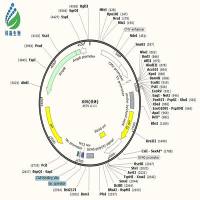BARNES-STYLE HOLE-MAZE AVOIDANCE LEARNING
互联网
Description
by Lucien T. "Tres" Thompson, Ph.D. The University of Texas at Dallas
BARNES-STYLE HOLE-MAZE AVOIDANCE LEARNING
Spatial learning tasks for rats and mice are a well recognized as methods of quantifying rodent learning. One maze called the Morris water maze is widely as an aversive task forcing the rat or mouse to find the submerged platform and escape from the small tank of water in which he is swimming. Upkeep of the tank and stress on the animals, led to the alternative design shown below. Carol Barnes (J Comp Physiol Psychol. 1979 Feb;93(1):74-104) designed a “dry” maze using bright spotlights as the aversive stimulus. The resulting maze is easier to maintain and capable of testing rats with electronic brain implants.
The basic maze is 48 in diameter circle with 18 or 20 - 3 in holes evenly spaced around the perimeter. The maze is placed upon a base 2 3 feet above the floor. Under one of the holes is an escape box or tunnel that the rat can crawl into and be safe from the bright light. The escape box can be moved to a different location or the maze can be rotated, to create different learning paradigms.
Steps For Using the Barnes Maze:
Place animal in start cylinder (an open bottom box) in center of maze. Leave him there for at least 30 sec to acclimate.
Turn on bright spotlights and video camera recorder. Carefully lift start cylinder from top of animal and start stopwatch.
The rat will run around the maze trying to find a place to hide. He will peek in many of the holes trying to escape. When he finds his escape box, he will quickly crawl off the maze and out of the light and into the box. If the rat can not find the escape box after 4 min, place him in it and allow him to acclimate.
If possible, record on pencil and paper the number of holes, false attempts to escape into the wrong hole and time for the rat to find the escape box. Otherwise, review the tape and make notes then.
Leave rat in escape box for at least 2 min so that his escape attempt seems to the rat like he did really learn to escape.
Repeat training 4 times per day. With practice, the rat will run directly to the escape box and climb inside.
Rotate maze to change position of escape box by at least 90 degrees each day. Keep the position of the small holes alignment consistent. (i.e. One hole will always be on the centered on the north edge. A mark on the curtain or floor can help maintain the symmetry.) Rotation and cleaning force the rat to use his external spatial cues from the room rather than olfactory or local cues.
Clean the maze thoroughly daily. Between sessions use a non-ammonia based spray or damp towel.
Train for 10 days, 4 sessions per day. Sessions should be at least 15 min apart.









